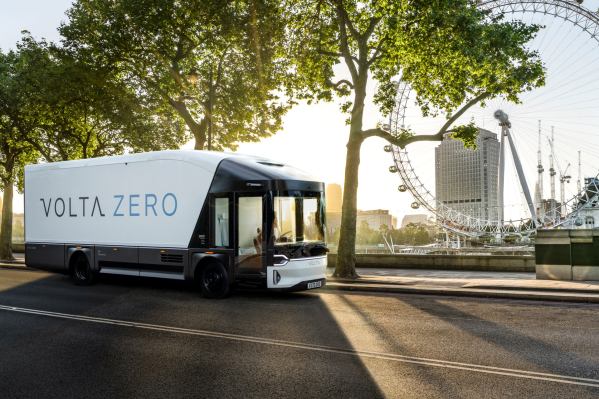Trucking tends to be associated with highways, but it’s not uncommon to find large delivery vehicles trundling down the tightly packed streets of the world’s most populated cities. According to EV startup Volta Trucks, that’s far from ideal: in London, large commercial vehicles cause around 26% of pedestrian fatalities and around 80% of cyclist fatalities, and account for an outsized portion of carbon emissions.
Volta’s solution is to electrify and redesign the large cargo vehicle — called Heavy Goods Vehicles (HGVs) in Europe — for middle- and last-mile delivery in urban centers. “The traditional design of trucks and city centers really don’t work together, but you can’t just ban trucks from city centers,” a company spokesperson told TechCrunch.
Volta Trucks has raised a €37 million ($44 million) funding round to accelerate its plans, starting with a fleet of pilot vehicles in London and Paris.
The round was led by New York-based Luxor Capital Group and returning investor Byggmästare Anders J Ahlström Holding of Stockholm. New investors included U.S. electric truck and battery manufacturer Proterra and supply chain management company Agility.
The idea for the company came to Volta co-founder and Swedish serial entrepreneur Carl-Magnus Norden when Elon Musk revealed the Tesla Model 3. Norden realized that there was very little equivalent movement to electrify the world of commercial vehicles, despite the fact that they produce a large share of carbon emissions.
Four years later, Volta (not to be confused with Volta Charging, the European EV charging station company) has come up with a truck that gives the driver a 220-degree view, similar to what one might see on a city bus. The driver’s seat is also in the center of the cab. On the inside of the 16-ton truck, called Volta Zero, will sit a single unit containing an electric motor, transmission and rear axle supplied by OEM supplier Meritor. This unit, called an eAxle, leaves more space between the chassis rails for the battery.
Those batteries will have a 95- to 120-mile range and will be designed by Proterra, a supplier (and now investor) that Volta says will be able to furnish batteries into the longer term and at higher production levels. Volta is imagining that it will produce up to 5,000 trucks by the end of 2023, 14,000 to 15,000 by 2024, and 27,000 trucks by 2025.
Volta plans to also offer a “truck as a service” model, which is a leasing agreement including insurance, charging infrastructure, service repair and maintenance. While Volta also plans on selling trucks outright, the spokesperson said the company anticipates the leasing model will make up 50%, and as high as 80%, of its business.
Volta is gearing up to launch a fleet of six R&D vehicles in London and Paris at the beginning of the year. These trucks will be used for internal validation. The company plans to start about a 33-vehicle pilot program with customers in two major European cities by the middle of next year.
The plan is that this will allow Volta to start full-scale production by the end of 2022. All of the vehicles, with the exception of the six beta trucks, will be manufactured by Steyr Automotive in Austria. The two announced the manufacturing agreement last week.
Volta says it has letters of intent for 2,500 trucks. The goal is to convert these to binding deposit-led orders as Volta moves closer to series production. This round now brings its total funding to date to around €60 million ($71 million).
Home EV electric trucking Volta Trucks raises €37 million to bring electric delivery trucks to the...



